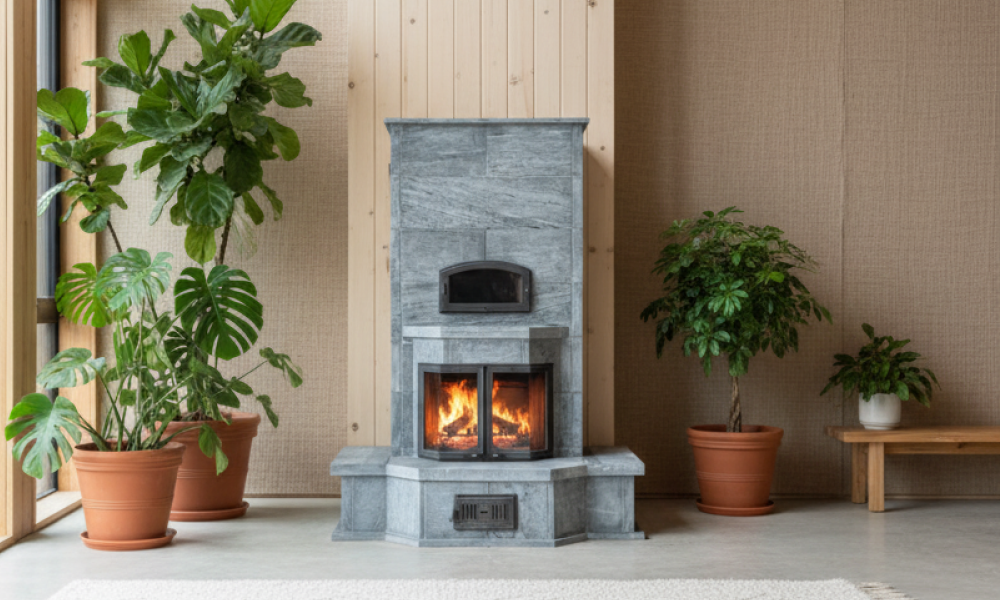Radiant heat from a masonry heater is more efficient than convection heating systems because masonry heaters transfer heat directly to objects and people via infrared radiation, rather than relying on heating and circulating air. Here’s why masonry heaters are the most efficient way to heat with wood:
- Direct Heat Transfer: Radiant heat emits infrared waves that travel in straight lines and are absorbed by solid surfaces (walls, floors, people) without significantly warming the air. Convection, by contrast, heats air, which then circulates to warm objects indirectly. This direct transfer reduces energy loss, as air is a poor conductor of heat and can lose warmth through drafts or poor insulation.
- Minimal Heat Loss in Open Spaces: In convection systems (like forced-air heaters and wood stoves), warm air can escape through open doors, windows, or ventilation, requiring continuous energy to reheat the space. Radiant heat warms objects and people directly, so it’s more effective in open or poorly insulated areas like garages, patios, or high-ceiling rooms where convective heat would rise and dissipate.
- No Air Movement: Convection relies on air circulation, which can stir up dust, allergens, or pollutants, requiring additional energy for filtration or ventilation. Radiant heat doesn’t move air, avoiding these issues and maintaining a cleaner, more energy-efficient environment.
- Faster Warm-Up: Radiant heat provides immediate warmth to surfaces and people in its path, as it doesn’t need to heat the entire air volume first. Convection systems take longer to raise air temperature and circulate it, which can increase energy use, especially in short-use scenarios.
- Lower Operating Temperatures: Radiant heating masonry heaters operate at lower temperatures (e.g., 120-180°F surface temperatures) compared to convection systems (e.g., wood stove or gas forced air heaters at 200-450°F). This lower temperature requirement can reduce energy consumption, especially when paired with efficient thermal mass soapstone masonry heaters, and is far safer.
- Reduced Stratification: In convection heating, warm air rises, creating temperature gradients where ceilings are warmer than floors. This stratification wastes energy, as the heat isn’t where people need it. Radiant heat warms surfaces and people at ground level, providing consistent comfort with less energy.
Call or email us today to discuss a soapstone masonry heater for your home or project.

Leave a Reply